How to Raise Emotionally Intelligent Children?
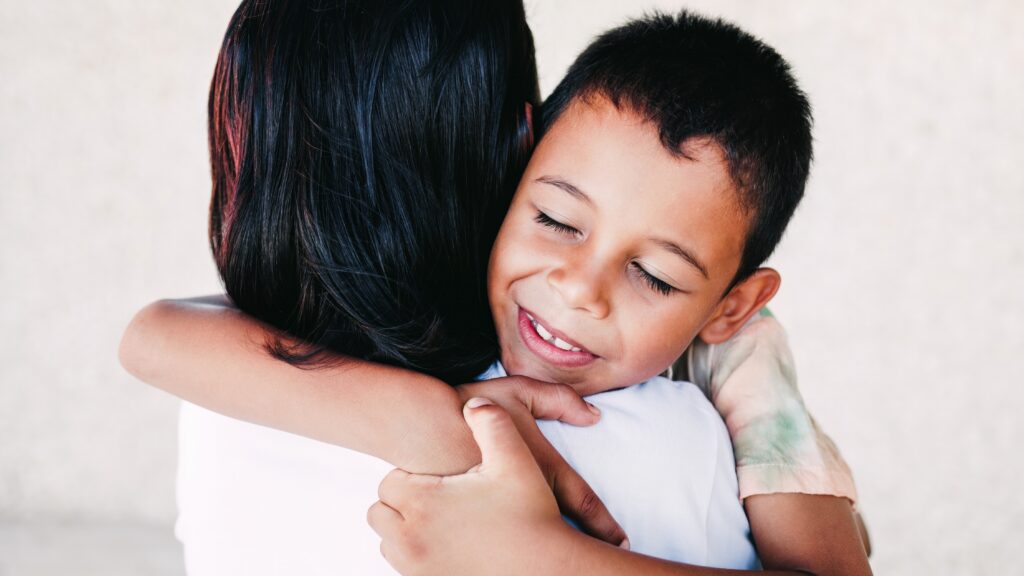
In today’s fast-moving world, being book-smart is no longer enough. What truly sets children up for a successful and fulfilling life is their emotional intelligence—the ability to recognize, understand, and manage their own emotions while empathizing with others. And like any skill, emotional intelligence isn’t something kids are just born with—it’s something they learn. As the conscious parent, raising emotionally intelligent children means prioritizing connection over correction and curiosity over control. It’s about equipping your child with the emotional tools they need to thrive in relationships, school, and eventually, the workplace. Whether you’re parenting toddlers or teenagers, this beginner-friendly guide—grounded in science, compassion, and mindful parenting—will walk you through how to begin nurturing emotional intelligence right from home. 1. Name It to Tame It: Teach Emotional Awareness The first step in raising emotionally intelligent kids is helping them identify and label their emotions. This may seem simple, but many adults still struggle to do this clearly. When we support children in naming their emotions, we give them the power to express, understand, and eventually regulate them. Try this: As child development specialists affirm, emotion labeling activates the thinking brain (prefrontal cortex) and soothes the emotional brain (amygdala). This “name it to tame it” concept helps children feel seen and teaches them that all emotions are valid—even the tough ones. And when your child does open up, respond with active listening parenting—reflect back what you hear without fixing or minimizing. 2. Model Emotional Regulation and Repair Your child learns how to manage emotions not from what you say—but from what you do. That’s why the conscious parent begins with self-awareness. Do you shut down when angry? Raise your voice when overwhelmed? These are teachable moments—not just for your child, but for you. Show them that emotions aren’t something to fear or avoid. How to model regulation: This level of emotional transparency builds trust and safety, especially in families practicing conscious co-parenting. Whether you live under the same roof or are co-parenting across two homes (like the model in Conscious Co-Parenting NJ), consistency in emotional modeling matters. Repairing and reconnecting regularly—especially during family meetings—also fosters holistic child development by teaching children that mistakes don’t define us and that relationships can recover and grow. 3. Encourage Empathy and Problem-Solving Emotional intelligence isn’t just about handling your own emotions—it’s about responding to others with empathy. Start early by helping kids step into someone else’s shoes. When conflicts arise between siblings or friends: You can also practice this skill proactively during role-play, stories, or community experiences. Encourage your child to help a friend in need, donate toys, or comfort someone who is sad. These habits reinforce the benefits of mindful parenting for child development, where compassion becomes second nature. And when they face tough situations—like losing a game, being excluded, or failing a test—support their growth by focusing on solutions rather than blame. Use positive discipline strategies for toddlers and older children to teach boundaries with kindness: Final Thoughts: Raising Hearts as Well as Minds At the end of the day, what we want most for our kids isn’t just that they succeed—but that they feel whole, connected, and confident in who they are. Emotional intelligence is the cornerstone of that wholeness. By raising emotionally intelligent children, we raise future adults who know how to love, lead, listen, and live with integrity. And that starts with us—one conversation, one breath, one moment at a time. At Vedangi Brahmbhatt, we’re here to walk with you on this journey of heart-first parenting. Whether you’re just starting out or already diving into deeper emotional work, remember: you don’t have to be perfect—you just have to be present. Emotional Intelligence Tip: Create a “Feelings Corner” at home—a cozy space with emotion flashcards, sensory toys, calming music, and a journal. It becomes a safe zone for your child to cool off and connect with their feelings. Stay Connected: For more tools, emotional coaching tips, and parenting insights: 👉 Follow us on Instagram, and YouTube For the latest news and updates, click here to view our recent press releases.
The Difference Between Traditional and Conscious Parenting
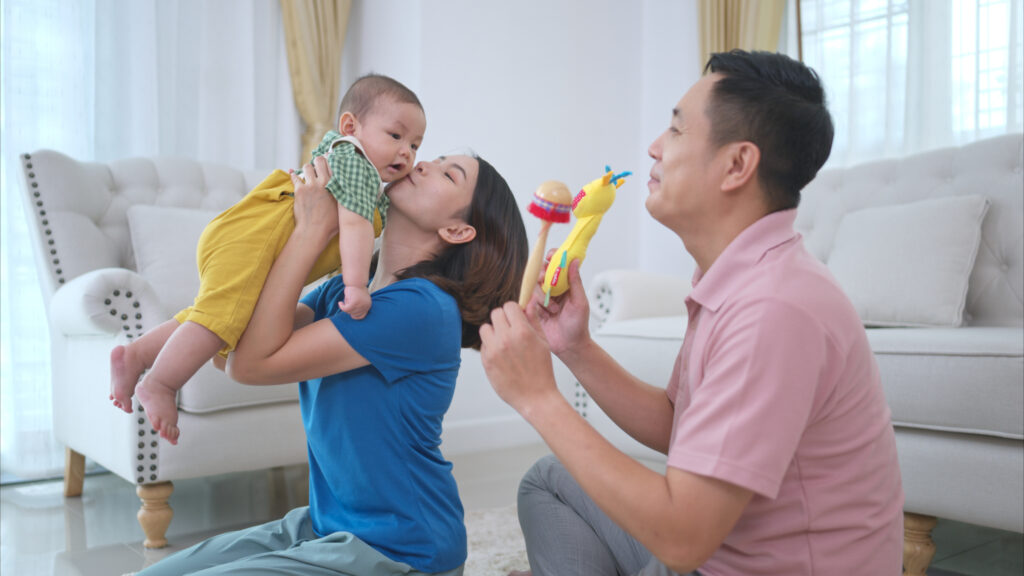
“Because I said so.” For many of us, those words echo in memory—firm, final, and unquestioned. Traditional parenting, rooted in obedience and authority, has long been the go-to model for raising children. But as our understanding of emotional health, communication, and child psychology evolves, so does the way we parent. Welcome to the world of the conscious parent—a paradigm where empathy, emotional awareness, and presence take center stage. At Vedangi Brahmbhatt, we guide families toward more connected and intentional parenting practices. This article breaks down the core differences between traditional parenting and conscious parenting, helping you decide what resonates best for your family’s journey. 1. Control vs Connection Traditional Parenting: Traditional parenting often operates on a top-down model, where the parent is the authority and the child is expected to obey. Discipline often involves rewards for good behavior and punishments for bad behavior, aiming to manage behavior through external control. This approach can result in compliance—but sometimes at the cost of emotional expression or internalized shame. Conscious Parenting: Conscious parenting shifts the focus from control to connection. Rather than trying to manage a child’s behavior, conscious parents try to understand the emotions beneath the behavior. It’s about addressing the root cause, not just the surface response. By practicing active listening parenting and tuning into your child’s emotional needs, you create a safe, nurturing space where growth happens through mutual understanding—not fear. This style of parenting is deeply aligned with mindful parenting, which prioritizes being present and emotionally responsive rather than reactive. Children raised in this environment are more likely to develop emotional regulation skills, fostering long-term mental wellness. 2. Obedience vs Emotional Awareness Traditional Parenting: In traditional models, a child’s obedience is often viewed as the benchmark for successful parenting. There is an emphasis on respect for authority, often without the same weight placed on understanding emotions or validating the child’s perspective. While structure is important, this approach can sometimes suppress a child’s voice, leaving them less equipped to navigate emotions or advocate for themselves. Conscious Parenting: The conscious parent believes that emotions are information, not problems. Children are encouraged to express their feelings, ask questions, and participate in conversations about limits and consequences. This doesn’t mean a lack of structure—boundaries still exist, but they’re rooted in compassion and communication. Using tools from nonviolent communication, parents teach children how to express needs respectfully while also listening to others. This lays a strong foundation for holistic child development, where emotional intelligence and self-regulation are key outcomes. If you’re co-parenting, embracing conscious co-parenting (like that modeled in Conscious Co-Parenting NJ) ensures that both caregivers support the child’s emotional world consistently—no matter how many households they live in. 3. Behavior Correction vs Inner Growth Traditional Parenting: Traditionally, parenting revolves around shaping a child’s behavior to meet social expectations—be polite, don’t talk back, don’t cry in public. Mistakes are often met with consequences, and success is typically measured by external achievement or compliance. This can create children who are “well-behaved” but who struggle with emotional resilience, self-awareness, or authentic expression. Conscious Parenting: In contrast, conscious parenting sees parenting as a mirror. Children reflect our triggers, our fears, and our unmet needs. Rather than correcting them, we pause to explore what’s coming up in us. By focusing on internal growth and healing, parents model what it means to own mistakes, manage stress, and navigate difficult emotions. This vulnerability invites children to do the same—without fear of rejection or punishment. That’s why practices like family meetings, which encourage open discussion and shared decision-making, are often used in conscious homes. These conversations model accountability, empathy, and healthy conflict resolution. And for younger children, even routine toddler activities—like putting on shoes or sharing toys—become opportunities to teach autonomy and emotional literacy using positive discipline strategies for toddlers. Final Thoughts: It’s Not Either/Or—It’s Evolve and Integrate Traditional parenting gave many of us structure, values, and safety. But conscious parenting builds on that foundation by weaving in emotional intelligence, empathy, and reflection. It’s not about discarding the old—it’s about evolving into something more complete, more connected, and more human. You don’t have to get it perfect. Conscious parenting is not about being calm 100% of the time—it’s about being aware, curious, and willing to grow. And at Vedangi Brahmbhatt, we’re here to walk that journey with you. Parenting Tip: Before correcting your child’s behavior, try this 3-step pause: This brief moment of awareness can turn a power struggle into a breakthrough. Stay Connected: For more insights, tools, and heart-led parenting content: 👉 Follow us on Instagram, and YouTube For the latest news and updates, click here to view our recent press releases.
What Is Conscious Parenting? A Beginner’s Guide
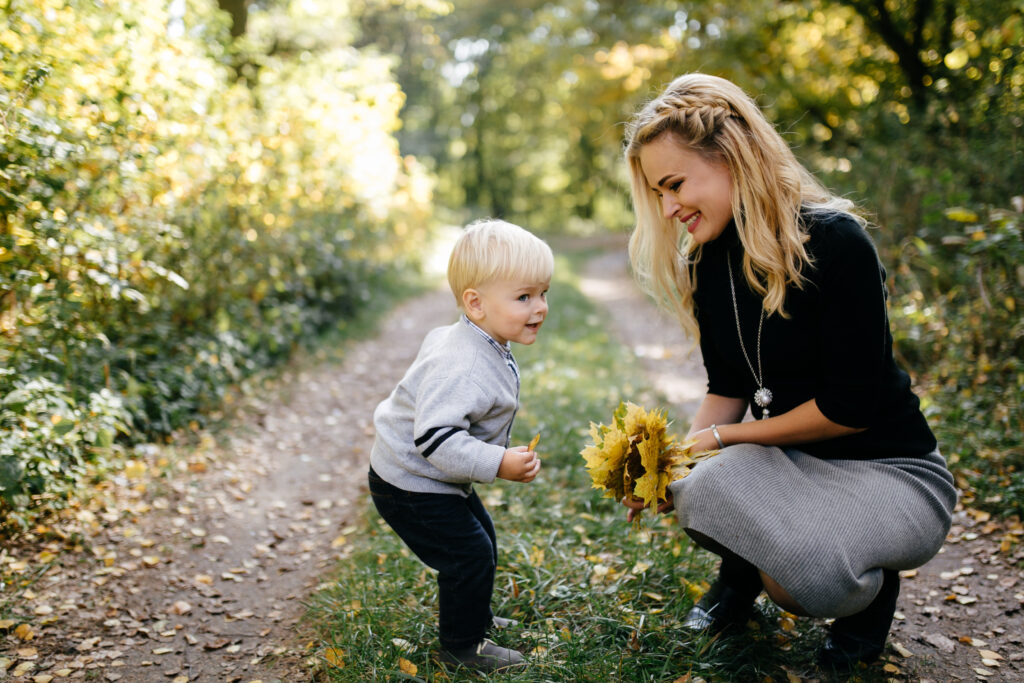
Parenting is one of life’s most beautiful—and challenging—journeys. Yet, many of us step into it without a roadmap. We may fall back on the way we were raised or react out of frustration, often wondering, “Am I doing this right?” At Vedangi Brahmbhatt, we believe that parenting isn’t just about raising children—it’s about raising ourselves in the process. Becoming the conscious parent means intentionally showing up in your relationship with your child, not just to teach them—but to grow with them. In this beginner’s guide, we’ll walk you through the foundations of conscious parenting, why it matters, and how to begin applying it in your own family. Whether you’re the parent of toddlers or teens, this gentle, present-focused approach offers lasting tools for connection, healing, and transformation. 1. What Is Conscious Parenting? At its core, conscious parenting is about being emotionally aware, present, and intentional in your relationship with your child. Rather than seeking to control behavior through punishment or reward, the conscious parent focuses on understanding what drives behavior, and how their own emotions play a role in shaping responses. Unlike traditional parenting models, conscious parenting emphasizes: This approach is deeply tied to mindful parenting, where awareness of your child’s needs begins with awareness of your own inner world. As any child development specialist will tell you, children don’t need perfect parents—they need present ones. This is also where nonviolent communication becomes a powerful tool, helping parents and children communicate in a way that prioritizes empathy, needs, and connection over conflict. 2. Why Conscious Parenting Works In today’s fast-paced, achievement-driven world, children face immense pressure. Conscious parenting offers an antidote: safety, presence, and empathy. Here are three powerful benefits of conscious parenting: A. Strengthens Emotional Intelligence When you respond instead of react, your child learns that emotions are safe and manageable. Over time, this builds emotional regulation kids need to succeed in relationships, academics, and life. Even during toddler activities, how we respond to meltdowns—through grounding, soothing, and curiosity—affects how a child learns to process their own feelings. B. Deepens Parent-Child Connection Conscious parenting shifts the dynamic from “power over” to “relationship with.” This creates open channels of trust and respect. In fact, using active listening parenting strengthens this connection, allowing children to feel heard, seen, and supported—even when boundaries are needed. C. Encourages Growth for Both Parent and Child One of the most profound aspects of conscious parenting is that the work begins with us. When we pause to reflect on our own triggers, reactions, and inherited patterns, we begin to heal. This growth enables us to break generational cycles and model healthier behaviors for our children. Whether you’re learning how to respond with empathy, building new bedtime routines, or engaging in weekly family meetings, this process leads to true holistic child development—and self-development. 3. How to Begin Conscious Parenting at Home You don’t need a perfect home environment or years of training to start this journey. Conscious parenting begins in small, mindful steps. Here’s how: A. Practice Awareness Before Action Before correcting behavior, ask yourself: B. Create Safe Spaces for Dialogue Start a family meeting tradition, even if it’s just 10 minutes once a week. Use this time for emotional check-ins, gratitude sharing, or playful discussions. It creates a foundation of trust and collaboration. C. Use Positive Discipline with Compassion Discipline in conscious parenting isn’t about control—it’s about guidance. Use positive discipline strategies for toddlers and older children that focus on solutions instead of shame: These approaches reflect how to implement conscious parenting techniques at home, helping kids learn accountability in a safe, supported way. D. Prioritize Connection Over Perfection Your child doesn’t need you to be flawless. They need you to show up with presence, admit when you make mistakes, and repair when things break. If you’re navigating parenting with a partner or co-parent, conscious co-parenting tools (like those explored in Conscious Co-Parenting NJ) can help maintain consistency, reduce conflict, and protect emotional safety across two households. Final Thoughts: Conscious Parenting Is a Journey, Not a Destination You don’t have to have all the answers today. Conscious parenting is not a rulebook—it’s a relationship. It’s about learning, unlearning, and showing up with intention, again and again. At Vedangi Brahmbhatt, we’re committed to supporting your journey as the conscious parent. Whether you’re just getting started or ready to deepen your practice, remember: every moment of presence is progress. You have the power to raise connected, compassionate, emotionally resilient humans—starting with how you show up today. Tip of the Day: Next time you feel triggered, pause and say out loud, “I need a moment to think.” This teaches your child that emotional regulation is a strength—not a shutdown. Stay Connected: For tools, videos, and conscious parenting inspiration: 👉 Follow us on Instagram, and YouTube For the latest news and updates, click here to view our recent press releases.
Spare Me: Teaching Your Kids to Change a Tire
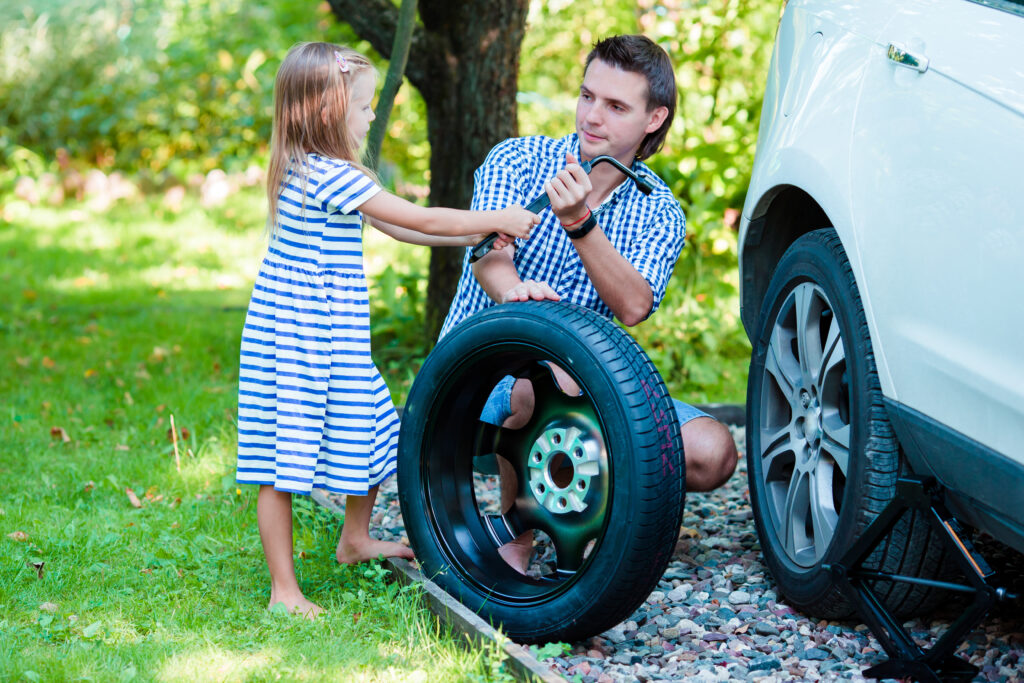
There’s something empowering about knowing how to solve a problem when life throws you a curveball—or in this case, a flat tire. Changing a tire may not be something taught in most schools, but it’s a life skill every young adult should have in their toolbox. Whether it’s your teen heading out for their first solo drive or your preteen tagging along on errands, showing them how to change a tire is about more than tools and technique. It’s about building confidence, responsibility, and self-reliance—core values we nurture as the conscious parent. In this post, we’ll guide you through how to teach this essential skill while embedding it into a mindful parenting framework, encouraging hands-on learning, emotional regulation, and long-term resilience. 1. Start With the Why: Empowerment Through Real-World Readiness Before you even pop the trunk, talk to your child about why this skill matters. Teens, especially, are more likely to engage when they understand the relevance. This is also a chance to spark a deeper conversation around safety, self-reliance, and being a prepared adult. Consider using active listening parenting to ask: You’re not just teaching a task—you’re modeling how to approach life with calm, clarity, and confidence. These are skills rooted in holistic child development, and they’re just as valuable in the garage as in the classroom. If your parenting journey includes conscious co-parenting, consider collaborating with your co-parent to ensure your teen gets equal opportunities to learn life skills from both households—consistency in these teachings reinforces responsibility across the board. 2. Turn Tire Changing Into a Teachable Moment Once your child understands why it matters, make the lesson hands-on. Teens retain more when they physically do the task themselves. Choose a safe environment—like your driveway or a quiet parking lot—and walk through the steps together: Step-by-Step Breakdown: Use the opportunity to build your child’s mechanical vocabulary, boost problem-solving confidence, and reinforce composure under pressure. It’s the perfect application of how to implement conscious parenting techniques at home—teaching responsibility through active participation, not lectures. Pro tip: Practice this as a family. Make it part of a weekend “life skills day” alongside other activities like budgeting, grocery shopping, or laundry folding—especially if you’re still in the stage of guiding through toddler activities. This normalizes learning and cooperation across all ages. 3. Normalize Mistakes and Celebrate Growth Chances are, your child might drop a lug nut, struggle to position the jack, or feel nervous about the process—and that’s okay. Instead of jumping in with correction, pause and use nonviolent communication and validation: When you frame the experience as a safe space to make mistakes and learn, you activate the benefits of mindful parenting for child development—resilience, grit, and an internal sense of capability. Celebrate their effort more than the outcome. Whether they master it on the first try or fumble their way through, what matters is that they tried. This approach reinforces emotional safety, confidence, and the idea that they’re never alone in learning new things. If your family uses family meetings, bring up the topic afterward. Ask your teen what they learned, how they felt, and what they’d want to teach someone else about the process. These conversations reinforce skill retention and encourage reflection. Final Thoughts: Tools, Trust & Tire Changes Raising capable, confident kids isn’t just about teaching them algebra or packing the perfect lunchbox. It’s about giving them the tools to face real life—even if that life looks like a flat tire on a rainy road someday. As the conscious parent, when you create time for practical skills like changing a tire, you’re instilling much more than a mechanical routine. You’re passing down empowerment, independence, and calm under pressure. So the next time your teen heads out for a drive, you’ll both know: they’ve got this. Tip of the Day: Keep a laminated step-by-step tire change guide in the glove compartment. Include a flashlight, gloves, and a small towel in the trunk to make the process easier, especially at night. Stay Connected: Want more content on raising independent, emotionally intelligent kids through practical skills? 👉 Follow us on Instagram, and YouTube For the latest news and updates, click here to view our recent press releases.
The Children on the Bus Go… How to Prepare Your Kids for the World of Bus Riding
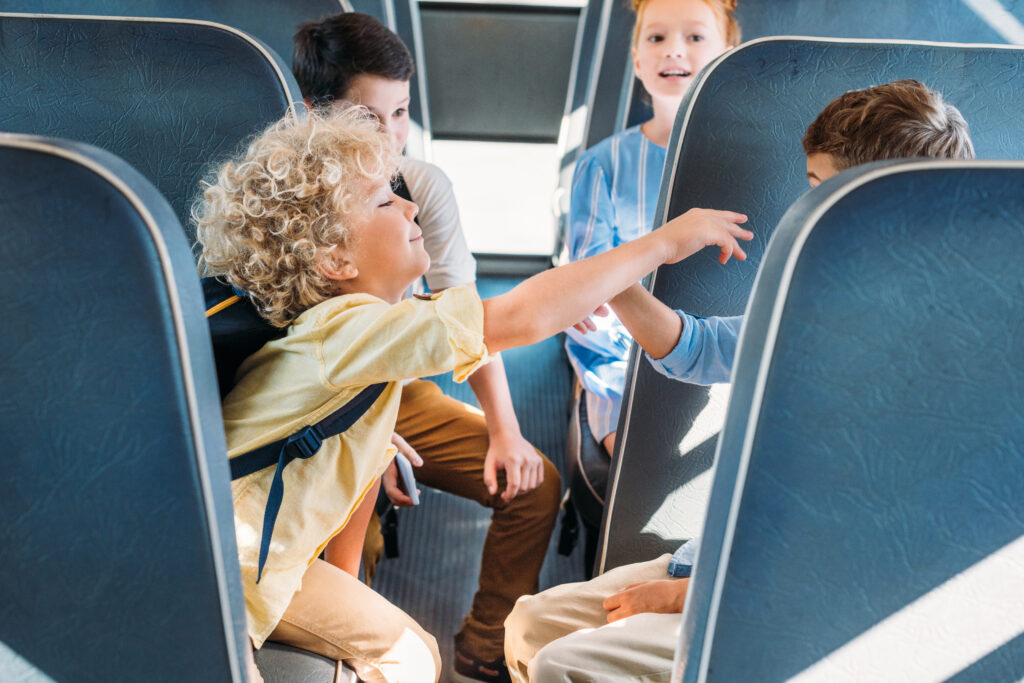
The first time your child climbs onto a school or city bus without you, it feels like a major milestone—and for good reason. Whether it’s a yellow school bus rolling through your neighborhood or a public transit ride to a summer camp, learning to navigate the bus system is an important step toward independence. As the conscious parent, your goal isn’t just to make sure your child knows where to sit. It’s to equip them with the emotional, social, and practical skills they need to ride with confidence, courtesy, and safety. In this post, we’ll explore how to prepare kids of all ages for the world of bus riding using tools from mindful parenting, trauma-informed guidance, and practical strategies supported by child development specialists. 1. Start With Basics: Safety, Structure & Predictability Before anything else, your child needs to know what to expect. The bus can be noisy, crowded, and overstimulating—especially for younger children who thrive on routine and predictability. Help your child feel secure by: For toddlers or early school-age children, consider using role-play as a toddler activity to act out bus scenarios. Pretend to be the driver or another passenger and practice polite phrases like: These early lessons help build social confidence and are supported by the benefits of mindful parenting for child development, where experiences are scaffolded step-by-step, helping kids build trust in themselves and their environment. 2. Foster Emotional Readiness Through Connection Even older children may feel nervous about taking the bus alone. This is where emotional regulation kids learn at home plays a critical role. A child who knows how to identify and name their feelings is more likely to ask for help when they need it. Use active listening parenting before and after the first few rides: Normalize the full range of experiences. If something didn’t feel right—maybe someone said something unkind or they felt overwhelmed by the noise—validate those emotions without judgment. You can also bring this up during a regular family meeting, where each member shares highs and lows of the week. This safe space helps kids develop trust and emotional vocabulary, which can be invaluable in unpredictable social settings like a school bus. And if you’re navigating two households, conscious co-parenting practices like consistent communication and shared expectations (as modeled by Conscious Co-Parenting NJ) can help reduce confusion or stress for kids riding different buses on different days. 3. Equip Them With Practical Tools & Social Awareness While the bus is a great place to gain independence, it’s also a mini society. Your child needs to learn more than just logistics—they need to know how to be a good bus citizen. Teach them: Using techniques from nonviolent communication, practice how to speak assertively but kindly. For example: You’re not just raising a child who can get from point A to point B. You’re raising a human who knows how to respect others, communicate clearly, and act responsibly. This approach also echoes how to implement conscious parenting techniques at home, by guiding your child to reflect on choices and consequences—not through control, but through collaboration and learning. Final Thoughts: The Ride Is as Important as the Destination Preparing your child for the world of bus riding is about more than logistics. It’s about trust, confidence, and connection. When you blend practical prep with emotional support, you’re not just sending your child onto a bus—you’re helping them step into the world with readiness and resilience. As a parent or caregiver, these everyday transitions are opportunities to model grace, kindness, and problem-solving. It’s one more way to lean into your role as the conscious parent, helping your child grow in both freedom and responsibility. Bus Tip of the Day Pack a “bus comfort kit” with your child: a small book, tissues, mints, a worry stone, or a calming fidget. These simple items can make a big difference during longer or stressful rides. Stay Connected: Want more guidance on school transitions, child confidence, or emotional resilience? 👉 Follow us on Instagram, and YouTube For the latest news and updates, click here to view our recent press releases.
When Your Teen Starts Cutting: A Conscious Parent’s Guide

There are few moments more devastating than discovering your child is intentionally hurting themselves. A scar on the wrist. A missing razor blade. A gut feeling that something isn’t right—confirmed with tears, silence, or denial. Self-harm, particularly cutting, is a growing reality among teens, and for many parents, it’s confusing, frightening, and heartbreaking. If your teenager has started cutting, you are not alone, and neither are they. As the conscious parent, your role isn’t to “fix” the behavior overnight, but to create a space where healing, support, and understanding can begin. This blog offers actionable steps, grounded in mindful parenting, emotional intelligence, and trauma-informed care, to help you walk through this challenging journey with compassion and strength. Understanding Why Teens Cut Self-harm is often a coping mechanism, not a cry for attention or a suicide attempt. Many teens turn to cutting when emotional pain becomes too overwhelming to express or manage. It might be tied to anxiety, depression, bullying, low self-esteem, or unresolved trauma. Cutting releases endorphins that temporarily numb emotional distress—making it a harmful but powerful way to gain control or express inner turmoil when words feel insufficient. By using active listening parenting, you can begin to understand what your teen may be feeling underneath the behavior. Instead of reacting with shock or punishment, respond with curiosity and care: Your child doesn’t need a lecture. They need to feel seen. 1. Respond, Don’t React: Creating a Safe Emotional Environment The first step is to stay calm. As a parent, your instinct may be to panic, cry, or even scold. But what your teen needs most is emotional safety. Create an open line of communication using nonviolent communication: Establish regular family meetings to allow space for emotional check-ins. Even 10 minutes once a week can normalize talking about feelings—something that often feels scary or “off-limits” for teens. This strategy also mirrors how to implement conscious parenting techniques at home, especially for families seeking stronger emotional bonds during adolescence. If your family structure involves conscious co-parenting, ensure both parents approach the situation with alignment and consistency, offering your teen a stable and unified foundation for healing. 2. Seek Professional Help—and Involve Your Teen in the Process While your support is powerful, self-harm typically requires the guidance of a licensed mental health professional. A therapist can help uncover root causes, develop coping skills, and offer validation in a space that feels private and safe. Child development specialists, trauma counselors, and adolescent psychologists are trained to handle these delicate issues. Invite your teen into this decision: Many teens feel more empowered when they have agency in their healing process. This approach aligns with the benefits of mindful parenting for child development, reinforcing trust and emotional autonomy. 3. Create a Coping Toolkit and Replace the Behavior, Not the Need Cutting meets a need—it could be release, distraction, or self-punishment. The key isn’t just to stop the action but to help your teen find healthy alternatives that meet those same emotional needs. Together, build a “coping toolkit” with sensory and expressive options: Integrate these tools into daily life, not just crisis moments. Even former toddler activities like finger painting or building with clay can reintroduce grounding practices that soothe the nervous system. Supporting this emotional regulation also helps with holistic child development—teaching teens that their pain can be managed without self-inflicted harm. Final Thoughts: You’re Not Alone, and Neither Is Your Teen If your teen is cutting, it doesn’t mean you’ve failed. It means they’re struggling, and they need your love, presence, and patience more than ever. With the right support, many teens move beyond self-harm into healthier coping, stronger self-awareness, and deeper emotional resilience. You can be part of that transformation—not through control, but through connection. At Vedangi Brahmbhatt, we believe healing begins at home. Through positive discipline strategies for toddlers to open-hearted discussions with teens, your parenting journey can remain rooted in respect and presence. Healing Tip: Keep a “Calm Corner” at home stocked with grounding items—essential oils, soft textures, a journal, and calming visuals. Let your teen know it’s their space to reset anytime. Stay Connected: Need more emotional support tools, trauma-informed parenting strategies, or mental health resources for your teen? 👉 Follow us on Instagram, and YouTube. For the latest news and updates, click here to view our recent press releases.
No Means No: Teaching Consent to Your Teen

They grow up so fast—from curious toddlers asking “why?” to teens exploring independence and relationships. As the conscious parent, you’ve likely guided your child through toddler activities, taught them emotional regulation, and modeled respect at home. But as they transition into young adulthood, a new and essential conversation emerges: informed consent. Talking about consent isn’t just a “sex talk.” It’s a lifelong skill about respect, boundaries, and communication. It’s about raising people who understand that their body is their own—and so is everyone else’s. In a world where mixed messages and peer pressure are everywhere, consent must be taught not as a warning, but as a value. Whether your young adult is heading to high school, college, or navigating their first serious relationship, here’s how to empower them with clarity, courage, and compassion. 1. Teach Consent as an Ongoing, Affirmative Practice Consent is not a one-time “yes” or “no.” It’s an ongoing, enthusiastic, mutual agreement—and it can be withdrawn at any time. Make sure your young adult understands: This approach mirrors the foundation of nonviolent communication: listening, checking in, and valuing the other person’s autonomy. In your everyday conversations, use real-life examples and media moments to ask: These discussions also reinforce the benefits of mindful parenting for child development, even as your child steps into adulthood. When you make consent about empathy and awareness—not just rules—you raise someone who leads with emotional intelligence. 2. Normalize Talking About Boundaries at Every Age Believe it or not, the consent conversation begins long before dating. It begins when you ask your toddler, “Do you want a hug?” or respect their “no” when they don’t want to be tickled. These early moments shape how kids view bodily autonomy—and that lesson grows with them. If you’ve already been practicing positive discipline strategies for toddlers, you’ve laid the groundwork. But it’s never too late to start. Use active listening parenting to model respect for boundaries: During family meetings, create a safe space to discuss emotions, relationships, and values. You might even role-play scenarios involving peer pressure or unclear boundaries. As uncomfortable as it may seem, this openness is critical to how to implement conscious parenting techniques at home—especially for teens navigating dating apps, parties, and complex social dynamics. 3. Equip Them With Real-World Tools and Language Teaching consent also means giving your child the language to assert themselves—and to respect others. That’s where confidence and clarity come in. Help them practice saying: You’re not scripting them—you’re preparing them. As a child development specialist would confirm, repeated exposure to respectful communication boosts emotional confidence and reduces the likelihood of coercive behavior in relationships. It’s also important to discuss how alcohol or drugs can impair consent. According to the CDC, nearly 1 in 5 women experience rape or attempted rape in college—and most incidents involve someone the victim knows, often under the influence. This makes it crucial to talk about how intoxication eliminates the ability to give proper consent, regardless of someone’s initial response. These conversations are not about fear—they’re about self-respect, protection, and responsibility. Final Thoughts: Respect Is the Real Romance Teaching your young adult about informed consent isn’t a checkbox. It’s an evolving dialogue rooted in trust, modeling, and emotional integrity. When you approach this topic with compassion and openness, you normalize respect. You raise someone who understands that “no” isn’t rejection—it’s a boundary. And you empower them to become not only safe and respectful in their relationships—but also courageous enough to advocate for others. At Vedangi Brahmbhatt, we believe these lessons start at home and ripple outward. From bedtime routines to first crushes, every moment is an opportunity to build trust, emotional literacy, and personal power. Consent Talk Tip: Create a “Consent Code” together—5 guiding principles for respectful relationships. Post it somewhere visible. Let your child personalize it, then revisit it during check-ins or family meetings. Stay Connected: For more parenting insights, emotional tools, and workshops designed for today’s families, follow us on: Instagram and Youtube.For the latest news and updates, click here to view our recent press releases.
Mom in the Mirror: Developing Healthy Body Positivity for Your Children

She watches you tug at your jeans.He hears you sigh when you skip dessert.They notice when you hide from the camera. Whether we mean to or not, our children are always absorbing how we talk about ourselves—and our bodies. As the conscious parent, we strive to create a home filled with love, resilience, and emotional well-being. That includes helping our kids develop a positive body image—and it often begins not with what we tell them, but with what we tell ourselves. In today’s appearance-driven world, body positivity is more than a movement—it’s a conscious parenting priority. It’s tied to holistic child development, emotional regulation, and how our children grow into self-assured, compassionate adults. Here’s how to foster body positivity in your children, starting with what they see in you. 1. Watch Your Words—Especially About Yourself Children mirror their parents’ language. If we constantly talk about needing to lose weight, pinching our waist, or labeling food as “bad,” our kids internalize those messages—about their bodies and about what bodies should look like. This is where mindful parenting becomes crucial. Instead of criticizing your reflection, model appreciation: This doesn’t mean pretending to love everything about your body—it means reframing how you speak to yourself out loud. Use nonviolent communication with yourself and your kids: speak with kindness, not judgment. Children raised with self-compassionate caregivers are more likely to adopt those same thought patterns themselves. If you’re co-parenting, ensure your values are mirrored across both households by using conscious co-parenting principles (such as those taught in Conscious Co-Parenting NJ) to align on messaging and reinforcement. 2. Celebrate Function Over Form Instead of complimenting kids only on how they look (“You’re so cute!”), shift the focus to what their bodies do. This is especially important during early development and toddler activities, when language and self-image are being formed. Say things like: This aligns with the benefits of mindful parenting for child development—you’re reinforcing value based on effort, capability, and feeling, rather than appearance. It supports emotional regulation kids need to handle body changes, peer feedback, and the digital world’s unrealistic standards. These habits build internal resilience that lasts longer than any external praise ever could. 3. Create Safe Spaces to Talk About Body Image Early Start age-appropriate conversations as soon as your child becomes aware of appearance. Even something as simple as a sibling pointing out a round belly or a TV character’s size can be a teaching moment. Use active listening parenting during these moments. Ask: Create space in your weekly family meeting to bring up body image, media influence, or even characters in books. Speaking of which, many of the best parenting books today include resources to help guide body-positive conversations and teach acceptance across cultures, abilities, and sizes. Also, model media literacy. Discuss filters, Photoshop, and unrealistic beauty standards in ads and shows. Teach your kids that bodies are not trends. 🪞 Final Thoughts: The Mirror Isn’t the Problem—The Message Is If your child grows up seeing a mom (or dad) who appreciates their body, treats it with respect, and doesn’t equate worth with weight or looks, that’s a revolution. Developing body positivity at home doesn’t require perfection. It requires presence. It requires being the example—not the exception—of self-love in action. As a child development specialist, I’ve seen the power of these shifts ripple through generations. Because when we change the way we see ourselves, we change how our children see themselves too. 💡 Body Positivity Tip: Create a “Gratitude Mirror” in your child’s room. Each morning, take turns sharing one thing you love about your body and why. Start simple: “I love my hands—they help me paint!” 📱 Stay Connected: Want more support on parenting, emotional wellness, and raising resilient, confident kids? 👉 Follow us on Instagram, and YouTube 📰 For the latest news and updates, click here to view our recent press releases.
Everybody’s Doing It”: How to Help Your Kids Avoid the Dangers of Drug Use, Underage Drinking & Peer Pressure

“But Mom, everyone’s doing it!” That sentence can send chills down any parent’s spine. Whether it’s underage drinking, vaping, or experimenting with drugs, peer pressure has never been more potent or more pervasive—and it’s starting younger than we might think. In the age of social media, “fitting in” isn’t just about school hallways anymore. It’s 24/7. It’s digital. It’s emotionally loaded. As the conscious parent, your mission isn’t just to say “no” on their behalf—it’s to equip them with the tools, confidence, and self-awareness to say no themselves. And while we can’t completely shield them from peer influence, we can absolutely strengthen their ability to navigate it. Here’s how to use mindful parenting, emotional communication, and real-world strategy to help your child steer clear of risky behaviors and stand strong in who they are. 1. Connection Is the Best Prevention The foundation of prevention isn’t control—it’s connection. Research consistently shows that teens who feel closely connected to their parents are far less likely to engage in risky behavior. That connection starts with everyday interactions—yes, even with toddler activities, and builds over time with intentional listening and trust. Use family meetings as a tool for regular check-ins. These don’t have to be serious or structured—they can be casual dinner-table chats where your child feels safe expressing emotions without judgment. When they know they’re heard, they’re more likely to come to you before something becomes a crisis. Practicing active listening parenting—really hearing your child, not just reacting—is key. Replace “you should never…” with “how do you feel when…” and “what would you do if…” questions to create dialogue, not shutdowns. 2. Teach Assertiveness Through Empathy and Practice Saying “no” is a skill—and like any skill, it requires practice. Empower your child with scripts and strategies to confidently resist peer pressure. Work through real scenarios together: Role-playing can feel silly, but it builds muscle memory for hard moments. Introduce the concept of nonviolent communication, where kids learn how to state their needs without judgment or shame. “I don’t want to do that” is a full sentence—and we need to remind them of that. If you’re co-parenting, it’s important both parents are aligned on core values. Using approaches from Conscious Co-Parenting NJ, ensure both households reinforce the same messages about safety, choices, and consequences. This shared approach supports how to implement conscious parenting techniques at home, even when home means two addresses. 3. Normalize Talking About Tough Topics Early Avoiding conversations about drugs and alcohol doesn’t protect your kids—it leaves them unprepared. Instead, normalize discussing hard topics. Just like we talk to young kids about feelings, sharing, and safety during positive discipline strategies for toddlers, we should talk to tweens and teens about peer pressure, choices, and boundaries. Use real-life news stories, media, or even teen TV shows to spark discussions. Ask questions like: These questions not only open conversation—they help develop emotional regulation kids need to manage the social and emotional stressors of adolescence. And always return to the “why.” Talk openly about the value of self-respect, health, and long-term goals. Teens want to feel in control—and when we help them align their choices with their values, they become more in control. 🚫 Final Thoughts: Strength Over Shame The truth is, peer pressure isn’t going anywhere. But with guidance, empathy, and strong emotional roots, your child doesn’t have to follow the crowd. Teaching your child to say “no” doesn’t start with rules. It starts with self-worth, emotional connection, and consistent conversations. It starts with you—showing up, listening in, and leading by example. As a child development specialist and parent, I believe that when we raise emotionally grounded kids through holistic child development, we give them the tools not just to resist peer pressure—but to rise above it. 💡 Tip: Create a “Confidence Card” with your child—5 phrases they can use to say no, walk away, or seek help. Keep it in their wallet or phone. 📱 Stay Connected: Want more tips, family support tools, and workshops on parenting through tough teen moments? 👉 Follow us on Instagram, and YouTube 📰 For the latest news and updates, click here to view our recent press releases.
